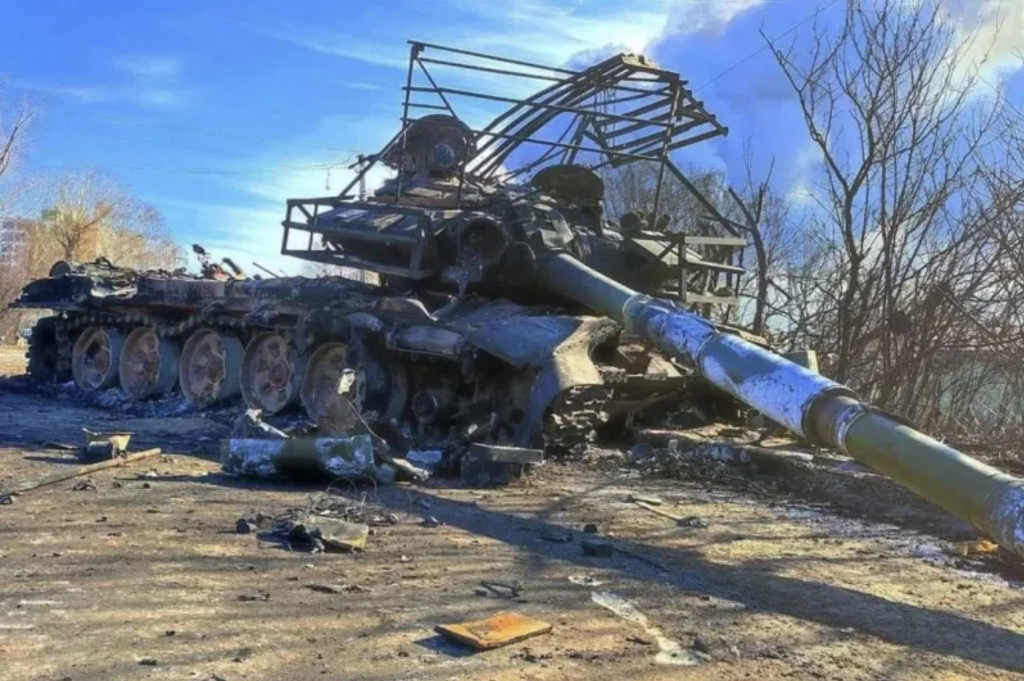
Kyiv Ain’t Damascus: Russia’s Failed Transition from Counterinsurgency to the Conventional Fight
It’s satisfying to watch the Russian military faceplant on the world stage. Vladimir Putin’s forces have thus far failed to hold key terrain, gain air superiority, or resolve logistics complications in Ukraine. The casualty statistics are staggering: an estimated 65,000 Russians have been killed and another 195,000 wounded after only eight months of fighting, according to Western media and Ukrainian sources. The inability to execute the fundamentals has relegated the Russian army from the second-best army in the world to the second-best army in Ukraine.
We can learn from watching our adversary flounder in Eastern Europe. As the U.S. pivots from counterterrorism to the near-peer threat, it’s worth remembering Russia is fresh off a successful counterinsurgency campaign in Syria. The post-Global War on Terror landscape is fraught with talk of changing priorities, reorganizations, and preparing for multi-domain conflict. Seeing the forest through the trees is important, but it’s equally important not to lose sight of the basics.
Winning the conventional fight isn’t about gadgets or tech; it’s about brilliance in those basics that make special operations special and make the relentless grind of a well-orchestrated ground campaign so effective.
Here are six of the basics that went by the wayside when Russia crossed the line of departure into Eastern Ukraine. May they serve as a cautionary case study as the U.S. closes the chapter on post-9/11 contingency operations and prepares for the near-peer conventional fight.
1. The infantry is the main effort. Millenia of combat has proven campaigns are won or lost by the proficiency and lethality of infantrymen. An army cannot clear or hold key terrain from the air, through superior tech, or by proxy alone. For two-and-a-half centuries, the U.S. Marine Corps has understood this: every support, combat arms, and special operations military occupational specialty (MOS) exists to support the infantryman.
Ukraine is the first real test of Russia’s infantry in decades. In Syria, Bashar al-Assad’s forces, Iranian Quds Force, and Hizballah fighters shouldered nearly the entirety of the ground campaign, while Russian trainers, advisors, and Wagner Group contractors filled in the gaps. But the ground war in Eastern Europe is a far cry from the Levant, where Russian ground troops had the luxury of rotating units to gain combat experience. Russia now relies on its own inadequately prepared infantrymen to shoot, move, and communicate against a better-trained, better-equipped, and highly motivated adversary.
The lesson is clear: invest in the infantry. Give them the training and tools they need to master the fundamentals and win the conventional fight.
2. Air superiority is still superior. Control of the airspace means an Intelligence, Surveillance, and Reconnaissance (ISR) capability and vital close air support that keeps maneuver elements maneuvering. Russia’s air superiority went unchallenged in Syria and was the competitive advantage that turned the tide of the Syrian Civil War in Bashar al-Assad’s favor. Without opposing air defenses, the Russian Air Force flew an astounding 134 sorties in a 24-hour period in late 2015. Moscow clearly understands the importance of aerial freedom of movement but has thus far failed to secure it in Ukraine, thanks to a modern and coordinated air defense network. This includes Western Man Portable Air Defense Systems (MANPADS) that have wreaked havoc on Russia’s rotary-wing fleet. Russia’s air assets have taken such a hit that they’ve been forced to ration both aircraft and what’s left of their pool of trained pilots.
The lesson: don’t take an adversary’s air defenses for granted. Air superiority doesn’t have a prayer without a plan to neutralize your enemy’s air defense network.
3. Know thyself and know thy enemy. And his allies. Sun Tzu had much to say about knowing one’s own capabilities and limitations and picking a fight you can’t win.
Russia was lulled into a sense of security after combat operations in Syria yielded a decisive outcome with relatively few casualties. Leaders overestimated their ability to execute a complex, multi-domain campaign and were eager to downplay the competence and will of their adversary. The same overconfidence probably created the naive expectation that Western-trained and equipped Ukrainians would cave like militants in a fractured Syrian insurgency.
What’s more, Moscow was somehow blindsided by the ensuing global backlash to the invasion. Sanctions and isolation aside, the miscalculation of NATO’s response was perhaps Putin’s most grievous strategic blunder. Instead of dissuading NATO expansion, the invasion has driven Northern European neutralists like Finland and Sweden to the alliance and revitalized the organization’s commitment to defense and deterrence.
The takeaway: there’s a stark difference between flawed intelligence and an ego big enough to skew reality and cloud judgment. Don’t allow objectivity and pragmatism to become casualties to pride.
4. Prioritize your logistics. Armies must be fed, fueled, and resupplied. By ground, air, or sea, both invading and defending forces have to establish supply lines and keep them open. Russia has had a hard time doing just that from the outset of the invasion. The destruction of the Kerch Strait Bridge to Crimea on 8 October is the latest setback that leaves Russian forces at least partially cut off from ground resupply and reinforcements.
With lines of communication wide open in Syria, Russia had no trouble outfitting a relatively resource-light counterinsurgency campaign. However, media reports from September suggest Russia is sourcing artillery from North Korea. Moscow should be able to manufacture its own conventional arms, but the move to import 70-year-old Soviet technology from Pyongyang indicates sustained combat, destroyed ammunition depots, and international sanctions are creating critical shortages.
More interesting is that Russia’s inability to keep up with demand indicates the paralyzing inefficiencies of its domestic supply chain. Russia is a kleptocracy where corruption infiltrates markets and creates inefficiencies at every level – including the production of ammunition. The inability of arms manufacturers to meet a surge in demand is probably one of many self-inflicted market failures that plague the resource-heavy campaign in Ukraine.
The upshot: build a self-reliant and resilient supply chain. Eliminate single points of failure and create redundancy by embracing the efficiencies of private industry.
5. The enemy is always listening. The low threat of digital exploitation in Syria created a slew of bad habits amongst Russian forces that followed them to the European theater.
If you carry a phone or use a laptop, you have a digital footprint. I won’t address methods or tradecraft, but apps, texts, posts, and transactions associated with a particular device all contribute to a user’s digital footprint. Sloppy operational security (OPSEC) is a targeter’s dream: the disclosure of digital breadcrumbs through social media, geotagged images, adware, and unencrypted messages reveals plans, movements, and relationships. It’s safe to assume digital spillage by Russian forces – at least early in the war – provided Ukrainian forces with a target-rich environment.
The takeaway: assume the enemy is always watching and listening because he probably is. Delete your TikTok account, use a virtual private network (VPN), and limit work discussions to encrypted apps. Educate yourself on digital vulnerabilities and implement the highest of OPSEC standards for warfighters and the contractor workforce.
6. Maintain discipline. The breakdown in Russian discipline was evident from the start of the war when stalled crews en route to Kyiv abandoned vehicles and weapons to find food and fuel. The absence of restraint has continued via a shocking display of human rights violations against Ukrainian civilians and prisoners of war. War crimes have become synonymous with Russian military culture and have been a fixture in every Russian conflict since at least the start of the Second World War. However, the behavior is likely less a tactic to break an adversary’s will and more an absence of command and control, where undisciplined troops are permitted (at least tacitly) to vent frustrations through murder, rape, and torture.
Russia could get away with murdering civilians in Syria; despite the heavy media presence, the relatively opaque operating environment allowed Russia and the Assad regime to obfuscate human rights violations as part of their counterinsurgency campaign. But with all eyes on Ukraine and a direct line between President Zelensky and the West, the growing list of war crimes is hard to hide.
The days of Genghis Khan are long gone, and war crimes have real consequences. An undisciplined occupying force serves to galvanize a defending army and strengthen the resolve of an already strong-willed populace. And in the Western World’s eyes, it’s the latest in a series of egregious injustices perpetrated upon Ukraine and another reason to keep the lethal aid flowing to Kyiv.
The lesson: without discipline, operations are, at best, rudderless and void of credibility. At worst, a campaign void of discipline forfeits the moral high ground and undermines the case for military action.


